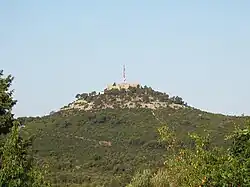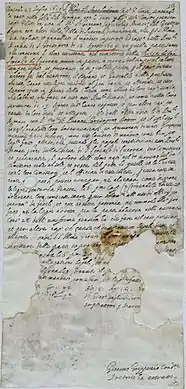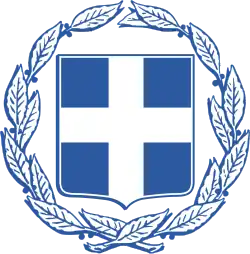| House of Loredan-Santa Maria | |
|---|---|
| Noble House | |
 Coat of Arms of the House of Loredan | |
| Parent family | |
| Country | Former Modern |
| Current region | |
| Etymology | by the churches of Santa Maria Formosa and Santa Maria dei Miracoli |
| Place of origin | |
| Founded | 14th century |
| Founder | Pietro Loredan |
| Titles | Procurator of Saint Mark Regent of the Archipelago Duchess of the Archipelago Duke of Albania Duke of Morea Duke of Dalmatia Duke of Friuli Count of Brescia Count of Crema Count of Famagusta Count of Feltre Count of Kotor Count of Palmanova Count of Peschiera Count of Pula Count of Rovigo Count of Salò Count of Scutari Count of Spalato Count of Treviso Count of Zara Lord of Antiparos Lady of Ios Lady of Naxos Lady of Paros Lady of Therasia |
| Members | |
| Connected members | |
| Connected families | |
| Distinctions | Order of Saint Mark |
| Traditions | Roman Catholicism |
| Motto | NON NOBIS DOMINE (Praise us not, O Lord.) |
The House of Loredan-Santa Maria is a cadet branch of the noble House of Loredan which has produced many politicians, diplomats, military generals, naval captains, church dignitaries, writers and lawyers, and has played a significant role in the creation of modern opera with the Accademia degli Incogniti, also called the Loredanian Academy. The branch draws its name from the parishes of Santa Maria Formosa and Santa Maria dei Miracoli in Venice, around which it was historically settled. The progenitor of the branch is considered to be the famous admiral and procurator Pietro Loredan (1372-1438) by his sons Giacomo and Polo.
History
The branch of Santa Maria originated from the sons of the admiral Pietro Loredan (1372-1438), Giacomo (1396-1471) and Polo, in the late 14th century. From the two brothers it was divided into two separate lineages named after two nearby parishes around which its members were settled - Santa Maria Formosa (by the homonymous church in Castello) and Santa Maria Nova (by the Church of Santa Maria dei Miracoli in Cannaregio). Besides Venice, in the following centuries the branch also settled in the Aegean islands and on the Dalmatian coast.
Giacomo Loredan (1396-1471) was a military general who served as Captain of the Gulf and three times as Captain General of the Sea in the Venetian Navy.[1] He defeated the Ottomans in battle in 1464. For his many merits towards his homeland, his portrait was placed in the hall of the Great Council in the Doge's Palace, where it remained until the fire of 1577. According to Girolamo Priuli he was "handsome in body and very vigorous, prudent, just and liberal".[2]

Antonio Loredan (1420-1482) was captain of Venetian-held Scutari and governor in Split (Venetian Dalmatia), Venetian Albania and the Morea.[3] He is famous for the successful defence of Scutari from Sultan Mehmed II's Ottoman forces led by Hadım Suleiman Pasha.[4] According to some sources, when the Scutari garrison complained for lack of food and water, Loredan told them: "If you are hungry, here is my flesh; if you are thirsty, I give you my blood."[5] He also served as the Captain General of the Sea and is notable for commissioning the Legend of Saint Ursula (1497/98), a series of large wall-paintings by Vittore Carpaccio originally created for Scuola di Sant'Orsola which was under the patronage of the Loredan family.[6]
The family is also significant for the island of Antiparos in the Aegean Sea.[7] Apparently the Venetians did not pay much attention to the island which by the beginning of the 15th century was a pirate base and haven. This changed when the lord of the island became Giovanni Loredan, who had married Maria Sommaripa (d. 1446) from the family of the rulers of Paros, with whom he had a daughter Lucrezia Loredan (1446-1528), Lady of Antiparos.[8] Loredan brought new inhabitants to the island at his own expense and built the castle in 1440 which had a very specific and unique style of architecture.[9] The castle and the island remained in the ownership of the House of Loredan until 1480 when they were given as a dowry to Domenico Pisani, son of the Duke of Crete who had married Fiorenza, the daughter of the Duke of Naxos.[10]
Taddea Caterina Loredan, Duchess of the Archipelago, known as "a lady of wisdom and great talent",[11] was the wife of Francesco III Crispo, who was mentally ill and was known as the "Mad Duke".[11] Francesco attacked her in August of 1510; Taddea tried to escape from him, and she fled to the castle of her cousin Lucrezia Loredan, Lady of Ios and Therasia, where Francesco had followed her a day later and attacked her again, on the 17th of August 1510, now murdering her.[11] Their son John IV Crispo became the next Duke of the Archipelago in 1517, after a regency period during which he was still too young to rule. A 1908 book by historian William Miller titled "The Latins in the Levant, a History of Frankish Greece" indicates that the regent of the Duchy from 1511 to 1517 was Taddea's brother Antonio Loredan.[11]
Marco Loredan (1489-1557) was a senator and politician, as well as Count of Brescia, Feltre, Rovigo, Salò and Famagusta, presiding over a time of famine and poverty following the War of the League of Cambrai.[12][13]
Marco Loredan (d. 1577) was a priest and senator who was appointed by Pope Julius II as the Bishop of Nona (today Nin, Croatia), a position which he held from 1554 to 1577.[14] He was also appointed by Pope Gregory XIII as the Apostolic Administrator and Archbishop of Zara (today Zadar, Croatia), where he stayed from 1573 until his death on the 25th of June, 1577.[15]

Giovanni Francesco Loredan, born in 1607, was a writer and politician. He was born in Venice as the son of Lorenzo Loredan and Leonora Boldù.[16] When both of his parents died while he was very young, he was raised by his uncle Antonio Boldù and had as his teacher Antonio Colluraffi.[17][18] He divided his youth between hard study and an extravagant lifestyle.[19] He attended the classes of renowned Aristotelian philosopher Cesare Cremoni in Padua and began, before 1623, to gather around him the group of scholars who then formed the Accademia degli Incogniti, also called the Loredanian academy.[20] As founder of the Accademia degli Incogniti and a member of many other Academies, he had close contact with almost all the scholars of his time.[21] He and his circle played a decisive role in the creation of modern opera.[22][23] In addition to literary activity, he also took part in public affairs.[24] At twenty he was recorded in the Golden Book, but his career began quite late: in September 1632 he was elected Savio agli Ordini and in 1635 he was treasurer of the fortress of Palmanova. On his return in 1636 he reorganized the Accademia degli Incogniti and, in 1638, despite attempts to avoid it, he was obliged, as the only descendant of his branch, to contract marriage with Laura Valier.[25] He was then Provveditore ai Banchi (1640), Provveditore alle Pompe (1642), and in 1648 he made the leap to the rank of Avogador del Comùn that he held several times (1651, 1656 and 1657).[26] He subsequently joined the office of the State Inquisitors and became a member of the Council of Ten. In 1656 he entered the Minor Consiglio, that is, among the six patricians who, together with the doge, composed the Serenissima Signoria. However, he may then have been pushed out of office, as in the following years he no longer held important positions. In 1660 he was a Provveditore in Peschiera. The following year, on the 13th of August 1661, he died.[27]


Although most Venetian nobles usually came to Dalmatian cities on political or military duty, and stayed until the end of their term, branches of some Venetian noble families, such as the Loredans, the Venier, and the da Mosto families, settled in and around Zara.[28] A part of the Santa Maria branch of the Loredan family has been settled on the Dalmatian island of Ugljan (today part of Croatia) since the 18th century.[a] Descendants today still live on the island, as well as in London.
Titles
Genealogy
Note: Genealogical trees are partial and do not feature recent members.
Santa Maria Formosa
| House of Loredan-Santa Maria Formosa | |||||||||||||||||||||||||||||||||||||||||||||||||||||||||||||||||||||||||||||||||||||||||||||||||||||||||||||||||||||||||||||||||||||||||||||||||||||||||||||||||||||||||||||||||||||||||||||||||||||||||||||||||||||||||||||||||||||||||||||||||||||||||||||||||||||||||||||||||||||||||||||||||||||||||||||||||||||||||||||||||||||||||||||||||||||||||||||||||||||||||||||||||||||||||||||||||||||||||||||||||||||||||||||||||||||||||||||||||||||||||||||||||||||||||||||||||||||||||||||||||||||||||||||||||||||||||||||||||||||||||||||||||||||||||||||||||||||||||||||||||||||||||||||||||||||||||||||||||||||||||||||||||||||||||||||||||||||||||||||||||||||||||||||||||||||||||||||||||||||||||||||||||||||||||||||||||||||||||||||||||||||||||||||||||||||||||||||||||||||||||||||||||||||||||||||||||||||||||||||||||||||||||||||||||||||||||||||||||||||||||||||||||||||||||||||||||||||||||||||||||||||||||||||||||||||||||||||||||||||||||||||||||||||||||||||||||||||||||||||||||||||||||||||||||||||||||||||||||||||||
|---|---|---|---|---|---|---|---|---|---|---|---|---|---|---|---|---|---|---|---|---|---|---|---|---|---|---|---|---|---|---|---|---|---|---|---|---|---|---|---|---|---|---|---|---|---|---|---|---|---|---|---|---|---|---|---|---|---|---|---|---|---|---|---|---|---|---|---|---|---|---|---|---|---|---|---|---|---|---|---|---|---|---|---|---|---|---|---|---|---|---|---|---|---|---|---|---|---|---|---|---|---|---|---|---|---|---|---|---|---|---|---|---|---|---|---|---|---|---|---|---|---|---|---|---|---|---|---|---|---|---|---|---|---|---|---|---|---|---|---|---|---|---|---|---|---|---|---|---|---|---|---|---|---|---|---|---|---|---|---|---|---|---|---|---|---|---|---|---|---|---|---|---|---|---|---|---|---|---|---|---|---|---|---|---|---|---|---|---|---|---|---|---|---|---|---|---|---|---|---|---|---|---|---|---|---|---|---|---|---|---|---|---|---|---|---|---|---|---|---|---|---|---|---|---|---|---|---|---|---|---|---|---|---|---|---|---|---|---|---|---|---|---|---|---|---|---|---|---|---|---|---|---|---|---|---|---|---|---|---|---|---|---|---|---|---|---|---|---|---|---|---|---|---|---|---|---|---|---|---|---|---|---|---|---|---|---|---|---|---|---|---|---|---|---|---|---|---|---|---|---|---|---|---|---|---|---|---|---|---|---|---|---|---|---|---|---|---|---|---|---|---|---|---|---|---|---|---|---|---|---|---|---|---|---|---|---|---|---|---|---|---|---|---|---|---|---|---|---|---|---|---|---|---|---|---|---|---|---|---|---|---|---|---|---|---|---|---|---|---|---|---|---|---|---|---|---|---|---|---|---|---|---|---|---|---|---|---|---|---|---|---|---|---|---|---|---|---|---|---|---|---|---|---|---|---|---|---|---|---|---|---|---|---|---|---|---|---|---|---|---|---|---|---|---|---|---|---|---|---|---|---|---|---|---|---|---|---|---|---|---|---|---|---|---|---|---|---|---|---|---|---|---|---|---|---|---|---|---|---|---|---|---|---|---|---|---|---|---|---|---|---|---|---|---|---|---|---|---|---|---|---|---|---|---|---|---|---|---|---|---|---|---|---|---|---|---|---|---|---|---|---|---|---|---|---|---|---|---|---|---|---|---|---|---|---|---|---|---|---|---|---|---|---|---|---|---|---|---|---|---|---|---|---|---|---|---|---|---|---|---|---|---|---|---|---|---|---|---|---|---|---|---|---|---|---|---|---|---|---|---|---|---|---|---|---|---|---|---|---|---|---|---|---|---|---|---|---|---|---|---|---|---|---|---|---|---|---|---|---|---|---|---|---|---|---|---|---|---|---|---|---|---|---|---|---|---|---|---|---|---|---|---|---|---|---|---|---|---|---|---|---|---|---|---|---|---|---|---|---|---|---|---|---|---|---|---|---|---|---|---|---|---|---|---|---|---|---|---|---|---|---|---|---|---|---|---|---|---|---|---|---|---|---|---|---|---|---|---|---|---|---|---|---|---|---|---|---|---|---|---|---|---|---|---|---|---|---|---|---|---|---|---|---|---|---|---|---|---|---|---|---|---|---|---|---|---|---|---|---|---|---|---|---|---|---|---|---|---|---|---|---|---|---|---|---|---|---|---|---|---|---|---|---|---|---|---|---|---|---|---|---|---|---|---|---|---|---|---|---|---|---|---|---|---|---|---|---|---|---|---|---|---|---|---|---|---|---|---|---|---|---|---|---|---|---|---|---|---|---|---|---|---|---|---|---|---|---|---|---|---|---|---|---|---|---|---|---|---|---|---|---|---|---|---|---|---|---|---|---|---|---|---|---|---|---|---|---|---|---|---|---|---|---|---|---|---|---|---|---|---|---|---|---|---|---|---|---|---|---|---|---|---|---|---|---|---|---|---|---|---|---|---|---|---|---|---|---|---|---|---|---|---|---|---|---|---|---|---|---|---|---|---|---|---|---|---|---|---|---|---|---|---|---|---|---|---|---|---|---|---|---|---|---|---|---|---|---|---|---|---|---|---|---|---|---|---|---|---|---|---|---|---|---|---|---|---|---|---|---|---|---|---|---|---|---|---|---|---|---|---|---|---|---|---|---|---|---|---|---|---|---|---|---|---|---|---|---|---|---|---|---|---|---|---|---|---|---|---|---|---|---|---|---|---|---|---|---|---|---|---|---|---|---|---|---|---|---|---|---|---|---|---|---|---|---|---|---|---|---|---|---|---|---|---|---|---|---|---|---|
| |||||||||||||||||||||||||||||||||||||||||||||||||||||||||||||||||||||||||||||||||||||||||||||||||||||||||||||||||||||||||||||||||||||||||||||||||||||||||||||||||||||||||||||||||||||||||||||||||||||||||||||||||||||||||||||||||||||||||||||||||||||||||||||||||||||||||||||||||||||||||||||||||||||||||||||||||||||||||||||||||||||||||||||||||||||||||||||||||||||||||||||||||||||||||||||||||||||||||||||||||||||||||||||||||||||||||||||||||||||||||||||||||||||||||||||||||||||||||||||||||||||||||||||||||||||||||||||||||||||||||||||||||||||||||||||||||||||||||||||||||||||||||||||||||||||||||||||||||||||||||||||||||||||||||||||||||||||||||||||||||||||||||||||||||||||||||||||||||||||||||||||||||||||||||||||||||||||||||||||||||||||||||||||||||||||||||||||||||||||||||||||||||||||||||||||||||||||||||||||||||||||||||||||||||||||||||||||||||||||||||||||||||||||||||||||||||||||||||||||||||||||||||||||||||||||||||||||||||||||||||||||||||||||||||||||||||||||||||||||||||||||||||||||||||||||||||||||||||||||||
Note: Giacomo Loredan (1396-1471) and Beatrice Marcello had several children,[29] although only Antonio Loredan and Luca Loredan are featured in this genealogical tree.
Note: Antonio Loredan (1420-1482) and Orsola Pisani had many children,[30] although only three sons (Giovanni, Marco, Jacopo) are featured in this genealogical tree.[31][32]
Santa Maria Nova
| House of Loredan-Santa Maria Nova | ||||||||||||||||||||||||||||||||||||||||||||||||||||||||||||||||||||||||||||||||||||||||||||||||||||||||||||||||||||||||||||||||||||||||||||||||||||||||||||||||||||||||||||||||||||||||||||||||||||||||||||||||||||||||||||||||||||||||||||||||||||||||||||||||||||||||||||||||||||||||||||||||||||||||||||||||||||||||||||||||||||||||||||||||||||||||||||||||||||||||||||||||||||||||||||||||||||||||||||||||||||||||||||||||||||||||||||||||||||||||||||||||||||||||||||||||||||||||||||||||||||||||||||||||||||||||||||||||||||||||||||||||||||||||||||||||||||||||||||||||||||||||||||||||||||||||||||||||||||||||||||||||||||||||||||||||||||
|---|---|---|---|---|---|---|---|---|---|---|---|---|---|---|---|---|---|---|---|---|---|---|---|---|---|---|---|---|---|---|---|---|---|---|---|---|---|---|---|---|---|---|---|---|---|---|---|---|---|---|---|---|---|---|---|---|---|---|---|---|---|---|---|---|---|---|---|---|---|---|---|---|---|---|---|---|---|---|---|---|---|---|---|---|---|---|---|---|---|---|---|---|---|---|---|---|---|---|---|---|---|---|---|---|---|---|---|---|---|---|---|---|---|---|---|---|---|---|---|---|---|---|---|---|---|---|---|---|---|---|---|---|---|---|---|---|---|---|---|---|---|---|---|---|---|---|---|---|---|---|---|---|---|---|---|---|---|---|---|---|---|---|---|---|---|---|---|---|---|---|---|---|---|---|---|---|---|---|---|---|---|---|---|---|---|---|---|---|---|---|---|---|---|---|---|---|---|---|---|---|---|---|---|---|---|---|---|---|---|---|---|---|---|---|---|---|---|---|---|---|---|---|---|---|---|---|---|---|---|---|---|---|---|---|---|---|---|---|---|---|---|---|---|---|---|---|---|---|---|---|---|---|---|---|---|---|---|---|---|---|---|---|---|---|---|---|---|---|---|---|---|---|---|---|---|---|---|---|---|---|---|---|---|---|---|---|---|---|---|---|---|---|---|---|---|---|---|---|---|---|---|---|---|---|---|---|---|---|---|---|---|---|---|---|---|---|---|---|---|---|---|---|---|---|---|---|---|---|---|---|---|---|---|---|---|---|---|---|---|---|---|---|---|---|---|---|---|---|---|---|---|---|---|---|---|---|---|---|---|---|---|---|---|---|---|---|---|---|---|---|---|---|---|---|---|---|---|---|---|---|---|---|---|---|---|---|---|---|---|---|---|---|---|---|---|---|---|---|---|---|---|---|---|---|---|---|---|---|---|---|---|---|---|---|---|---|---|---|---|---|---|---|---|---|---|---|---|---|---|---|---|---|---|---|---|---|---|---|---|---|---|---|---|---|---|---|---|---|---|---|---|---|---|---|---|---|---|---|---|---|---|---|---|---|---|---|---|---|---|---|---|---|---|---|---|---|---|---|---|---|---|---|---|---|---|---|---|---|---|---|---|---|---|---|---|---|---|---|---|---|---|---|---|---|---|---|---|---|---|---|---|---|---|---|---|---|---|---|---|---|---|---|---|---|---|---|---|---|---|---|---|---|---|---|---|---|---|---|---|---|---|---|---|---|---|---|---|---|---|---|---|---|---|---|---|---|---|---|---|---|---|---|---|---|---|---|---|---|---|---|---|---|---|---|---|---|---|---|---|---|---|---|---|---|---|---|---|---|---|---|---|---|---|---|---|---|---|---|---|---|---|---|---|---|---|---|---|---|---|---|---|---|---|---|---|---|---|---|---|---|---|---|---|---|---|---|---|---|
| ||||||||||||||||||||||||||||||||||||||||||||||||||||||||||||||||||||||||||||||||||||||||||||||||||||||||||||||||||||||||||||||||||||||||||||||||||||||||||||||||||||||||||||||||||||||||||||||||||||||||||||||||||||||||||||||||||||||||||||||||||||||||||||||||||||||||||||||||||||||||||||||||||||||||||||||||||||||||||||||||||||||||||||||||||||||||||||||||||||||||||||||||||||||||||||||||||||||||||||||||||||||||||||||||||||||||||||||||||||||||||||||||||||||||||||||||||||||||||||||||||||||||||||||||||||||||||||||||||||||||||||||||||||||||||||||||||||||||||||||||||||||||||||||||||||||||||||||||||||||||||||||||||||||||||||||||||||
Note: Alvise Loredan (d. 1502) and Argentina Vincenzina Contarini had 10 children - 4 sons and 6 daughters, although only Alessandro, Lorenzo and Marco Loredan (1489-1557) are featured in the genealogical tree.[33]
Note: Besides the five sons listed, Marco Loredan (1489-1557) and Elisabetta Contarini also had daughters.
Alvise Loredan (d. 1502) was a military general.
Alvise Loredan (1533-1560) was assassinated in 1560.
Giovanni Loredan (1537-1571) was killed in the Echinades, Ionian Sea, as a commander of a galley in the Battle of Lepanto.
Polo Loredan (1540-1493) was the one to continue the lineage.
Ducal line in Greece
| House of Loredan-Greece | |||||||||||||||||||||||||||||||||||||||||||||||||||||||||||||||||||||||||||||||||||||||||||||||||||||||||||||||||||||||||||||||||||||||||||||||||||||||||||||||||||||||||||||||||||||||||||||||||||||||||||||||||||||||||||||||||||||||||||||||||||||||||||||||||||||||||||||||||||||||||||||||||||||||||||||||||||||||||||||||||||||||||||||||||||||||||||||||||||||||||||||||||||||||||||||||||||||||||||||||||||||||||||||||||||||||||||||||||||||||||||||||||||||||||||||||||||||||||||
|---|---|---|---|---|---|---|---|---|---|---|---|---|---|---|---|---|---|---|---|---|---|---|---|---|---|---|---|---|---|---|---|---|---|---|---|---|---|---|---|---|---|---|---|---|---|---|---|---|---|---|---|---|---|---|---|---|---|---|---|---|---|---|---|---|---|---|---|---|---|---|---|---|---|---|---|---|---|---|---|---|---|---|---|---|---|---|---|---|---|---|---|---|---|---|---|---|---|---|---|---|---|---|---|---|---|---|---|---|---|---|---|---|---|---|---|---|---|---|---|---|---|---|---|---|---|---|---|---|---|---|---|---|---|---|---|---|---|---|---|---|---|---|---|---|---|---|---|---|---|---|---|---|---|---|---|---|---|---|---|---|---|---|---|---|---|---|---|---|---|---|---|---|---|---|---|---|---|---|---|---|---|---|---|---|---|---|---|---|---|---|---|---|---|---|---|---|---|---|---|---|---|---|---|---|---|---|---|---|---|---|---|---|---|---|---|---|---|---|---|---|---|---|---|---|---|---|---|---|---|---|---|---|---|---|---|---|---|---|---|---|---|---|---|---|---|---|---|---|---|---|---|---|---|---|---|---|---|---|---|---|---|---|---|---|---|---|---|---|---|---|---|---|---|---|---|---|---|---|---|---|---|---|---|---|---|---|---|---|---|---|---|---|---|---|---|---|---|---|---|---|---|---|---|---|---|---|---|---|---|---|---|---|---|---|---|---|---|---|---|---|---|---|---|---|---|---|---|---|---|---|---|---|---|---|---|---|---|---|---|---|---|---|---|---|---|---|---|---|---|---|---|---|---|---|---|---|---|---|---|---|---|---|---|---|---|---|---|---|---|---|---|---|---|---|---|---|---|---|---|---|---|---|---|---|---|---|---|---|---|---|---|---|---|---|---|---|---|---|---|---|---|---|---|---|---|---|---|---|---|---|---|---|---|---|---|---|---|---|---|---|---|---|---|---|---|---|---|---|---|---|---|---|---|---|---|---|---|---|---|---|---|---|---|---|---|---|---|---|---|---|---|---|---|---|---|---|---|---|---|---|---|---|---|---|---|---|---|---|---|---|---|---|---|---|---|
| |||||||||||||||||||||||||||||||||||||||||||||||||||||||||||||||||||||||||||||||||||||||||||||||||||||||||||||||||||||||||||||||||||||||||||||||||||||||||||||||||||||||||||||||||||||||||||||||||||||||||||||||||||||||||||||||||||||||||||||||||||||||||||||||||||||||||||||||||||||||||||||||||||||||||||||||||||||||||||||||||||||||||||||||||||||||||||||||||||||||||||||||||||||||||||||||||||||||||||||||||||||||||||||||||||||||||||||||||||||||||||||||||||||||||||||||||||||||||||
Gallery
 Antonio Loredan (on the right) and a Young Man, by Vittore Carpaccio, 1495, Gallerie dell'Accademia, Venice
Antonio Loredan (on the right) and a Young Man, by Vittore Carpaccio, 1495, Gallerie dell'Accademia, Venice

 Portrait of Giovanni Francesco Loredan, by Giacomo Piccini
Portrait of Giovanni Francesco Loredan, by Giacomo Piccini Portrait of Giovanni Francesco Loredan, by Daniel van den Dyck
Portrait of Giovanni Francesco Loredan, by Daniel van den Dyck
.jpg.webp) Palazzo Loredan a Santa Maria
Palazzo Loredan a Santa Maria Castle of Antiparos, built by Giovanni Loredan, Lord of Antiparos in 1440
Castle of Antiparos, built by Giovanni Loredan, Lord of Antiparos in 1440
Notes
- ^ a: Although most Venetian nobles usually came to Dalmatian cities on political or military duty, and stayed until the end of their term, branches of some Venetian noble families, such as the Loredans, the Venier, and the da Mosto families, settled in and around Zara.[34]
- ^ b: In the actual Venetian language, his name was Pie[t]ro Loredano; in contemporary Greek sources, he is encountered as Πέτρος Λορδᾶς, Λαυρεδάνος, or Λορδάνο.
References
- ↑ "LOREDAN, Giacomo in "Dizionario Biografico"". www.treccani.it (in Italian). Retrieved 2021-04-14.
- ↑ Dizionario Biografico degli Italiani, Vol. 65. Rome: Levis-Lorenzetti.
- ↑ Honour, Hugh (1997). The Companion Guide to Venice. Companion Guides. p. 53. ISBN 978-1-900639-24-8.
- ↑ Soranzo, Girolamo (1968). Bibliografia veneziana in aggiunta e continuazione del "Saggio" di E. A. Cicogna (in Italian). Bologna. p. 73.
{{cite book}}: CS1 maint: location missing publisher (link) - ↑ Marshall Smith, C. (1927). The Seven Ages of Venice: A Romantic Rendering of Venetian History. Blackie & Son. p. 134.
- ↑ "Loredàn, Antonio nell'Enciclopedia Treccani". www.treccani.it (in Italian). Retrieved 2021-04-14.
- ↑ Zabarella, Jacopo (1646). Trasea Peto (in Italian). Padua.
- ↑ "The Venetian Castle of Antiparos". Antiparos island, Greece - Antiparos.com. Retrieved 2021-03-02.
- ↑ Miller, William (1908). The Latins in the Levant, a History of Frankish Greece (1204-1566). New York City: E.P. Dutton & Company.
- ↑ Papathanassiou, Manolis. "Castle of Antiparos". Καστρολόγος. Retrieved 2021-03-02.
- 1 2 3 4 Miller, William (1908). The Latins in the Levant: A History of Frankish Greece (1204–1566). London: John Murray. pp. 618–620. OCLC 563022439.
- ↑ "LOREDAN, Marco in "Dizionario Biografico"". www.treccani.it (in Italian). Retrieved 2021-04-09.
- ↑ Hierarchia Catholica, Vol. 3. p. 260.
- ↑ Les Ordinations Épiscopales, Year 1554.
- ↑ Hierarchia Catholica, Vol. 3. p. 260.
- ↑ "LOREDAN, Giovan Francesco in "Dizionario Biografico"". www.treccani.it (in Italian). Retrieved 2021-04-14.
- ↑ Ferrari, Luigi (1947). Onomasticon. Milan. p. 415.
{{cite book}}: CS1 maint: location missing publisher (link) - ↑ Miato, M. (1998). L'Accademia degli Incogniti di Giovan Francesco Loredan. Florence.
{{cite book}}: CS1 maint: location missing publisher (link) - ↑ Maidalchino, Francesco (1634). Il Loredano. Venice: Panegirico.
- ↑ Brocchi, V. L'accademia e la novella nel Seicento: Giovan Francesco Loredan. 1897.
- ↑ Ivanoff, N. (1965). Giovan Francesco Loredan e l'ambiente artistico a Venezia nel Seicento.
- ↑ Rosand, Ellen (2007). Opera in Seventeenth-Century Venice: the Creation of a Genre. University of California Press.
- ↑ Manini, L. (2015). Giovan Francesco Loredano, Morte del Volestein e altre opere. La Finestra Editrice. ISBN 978-8895925-60-8.
- ↑ Morini, A. (1994). La vie et l'oeuvre de Giovan Francesco Loredan (in French). Université de Paris.
- ↑ Brunacci, G. (1662). Vita di Giovan Francesco Loredan. Venice.
- ↑ Morini, A. (1997). Giovan Francesco Loredan: sémiologie d'une crise (in French).
- ↑ Lupis, A. (1663). Vita di Giovan Francesco Loredan senator veneto. Venice.
- ↑ Sander-Faes, Stephan Karl (2013). Urban Elites of Zadar: Dalmatia and the Venetian Commonwealth (1540-1569). Viella. p. 176.
- ↑ "LOREDAN, Giacomo in "Dizionario Biografico"". www.treccani.it (in Italian). Retrieved 2021-04-11.
- ↑ "LOREDAN, Antonio in "Dizionario Biografico"". www.treccani.it (in Italian). Retrieved 2021-04-11.
- ↑ Gullino, Giuseppe (2005). Dizionario Biografico degli Italiani, vol. 65 (in Italian).
- ↑ Mason Rinaldi, Stefania (2000). Carpaccio: The Major Pictorial Cycles. Skira. p. 33. ISBN 978-88-8118-737-9.
- ↑ "LOREDAN, Pietro in "Dizionario Biografico"". www.treccani.it (in Italian). Retrieved 2021-01-16.
- ↑ Sander-Faes, Stephan Karl (2013). Urban Elites of Zadar: Dalmatia and the Venetian Commonwealth (1540-1569). Viella. p. 176.
Further reading
- Barzman, Karen-edis (2017). The Limits of Identity: Early Modern Venice, Dalmatia, and the Representation of Difference. Brill. ISBN 9789004331518.
- Norwich, John Julius (2003). A History of Venice. Penguin UK. ISBN 978-0-14-101383-1.
- Setton, Kenneth Meyer (1976). The Papacy and the Levant, 1204–1571: The fifteenth century. American Philosophical Society. ISBN 978-0-87169-127-9.
- Miller, William. The Latins in the Levant: A History of Frankish Greece (1204–1566). London: 1908.
- Stahl, Alan M. (2009). "Michael of Rhodes: Mariner in Service to Venice". In Long, Pamela O. (ed.). The Book of Michael of Rhodes: A Fifteenth-Century Maritime Manuscript. Volume III: Studies. Cambridge, Massachusetts: MIT Press. ISBN 978-0-262-12308-2.
- Maidalchini, Francesco. Il Loredano. Panegirico. Venice 1634.
- Brunacci, G. Vita di Giovan Francesco Loredan. Venice 1662.
- Lupis, Antonio. Vita di Giovan Francesco Loredan Senator Veneto. Venice 1663.
- Brocchi, V. L'accademia e la novella nel Seicento: Giovan Francesco Loredan, "Atti del R. Istituto veneto di scienze, lettere e arti", s. 7, IX (1897–98), pp. 284–311.
- Ivanoff, N. Giovan Francesco Loredan e l'ambiente artistico a Venezia nel Seicento, "Ateneo veneto", III 1965, pp. 186–190.
- Morini, A. Sous le signe de l'inconstance. La vie et l'oeuvre de Giovan Francesco Loredan (1606-1661), noble vénitien, fondateur de l'Académie des Incogniti, diss., Université de Paris IV, 1994.
- Morini, A. Giovan Francesco Loredan: sémiologie d'une crise, "Revue des études italiennes", XLIII 1997, pp. 23–50.
- Morini, A. Giovan Francesco Loredan (1606-1661): le retour à la bergerie, in: Soulèvements et ruptures: l'Italie en quête de sa révolution. Actes du Colloque du CSLI, a cura di B. Toppan, Nancy 1998, pp. 73–88.
- Miato, M. L'Accademia degli Incogniti di Giovan Francesco Loredan. Venezia (1630-1661), Florence 1998.
- Loredan, Giovanni Francesco. Morte del Volestein e altre opere, a c. di L. Manini, La Finestra editrice, Lavis 2015 ISBN 978-8895925-60-8.
- Rosand, Ellen, Opera in Seventeenth-Century Venice: the Creation of a Genre. University of California Press, 2007 ISBN 978-0-520-25426-8 ISBN 0520254260.
- Zorzi, Ludovico (1998). Carpaccio e la rappresentazione di Sant'Orsola. Torino: Einaudi.
- Bertoša, Slaven (2012). Gli Orizzonti Mediterranei della Famiglia Veneziana Loredan.
- Morelli, Jacopo (1790). Della Istoria Viniziana di Monsignor Pietro Bembo Cardinale. Venice.
- Romanin, Samuele. Storia documentata di Venezia, Venice 1859.
- Dizionario Biografico degli Italiani, Volume 65: Levis–Lorenzetti. Rome: Istituto dell'Enciclopedia Italiana. (individual biographies of many family members)
- Manfroni, Camillo (1934). Enciclopedia Italiana.
- King, Margaret L. Umanesimo e patriziato a Venezia nel Quattrocento, vol. 1. Rome.
- Battista di Crollalanza, Giovanni (1965). Dizionario storico-blasonico delle famiglie nobili e notabili italiane estinte e fiorenti, vol. 2. Bologna.
- Berendt, John (2005). The City of Falling Angels. Penguin Press. ISBN 1-59420-058-0.
- Brusegan, Marcello (2005). La grande guida dei monumenti di Venezia. Rome: Newton & Compton. ISBN 88-541-0475-2.
- Hierarchia Catholica, Vol. 3. p. 260. (on the bishop Marco Loredan)
- Les Ordinations Épiscopales, Year 1554. (on the ordination of the bishop Marco Loredan)




